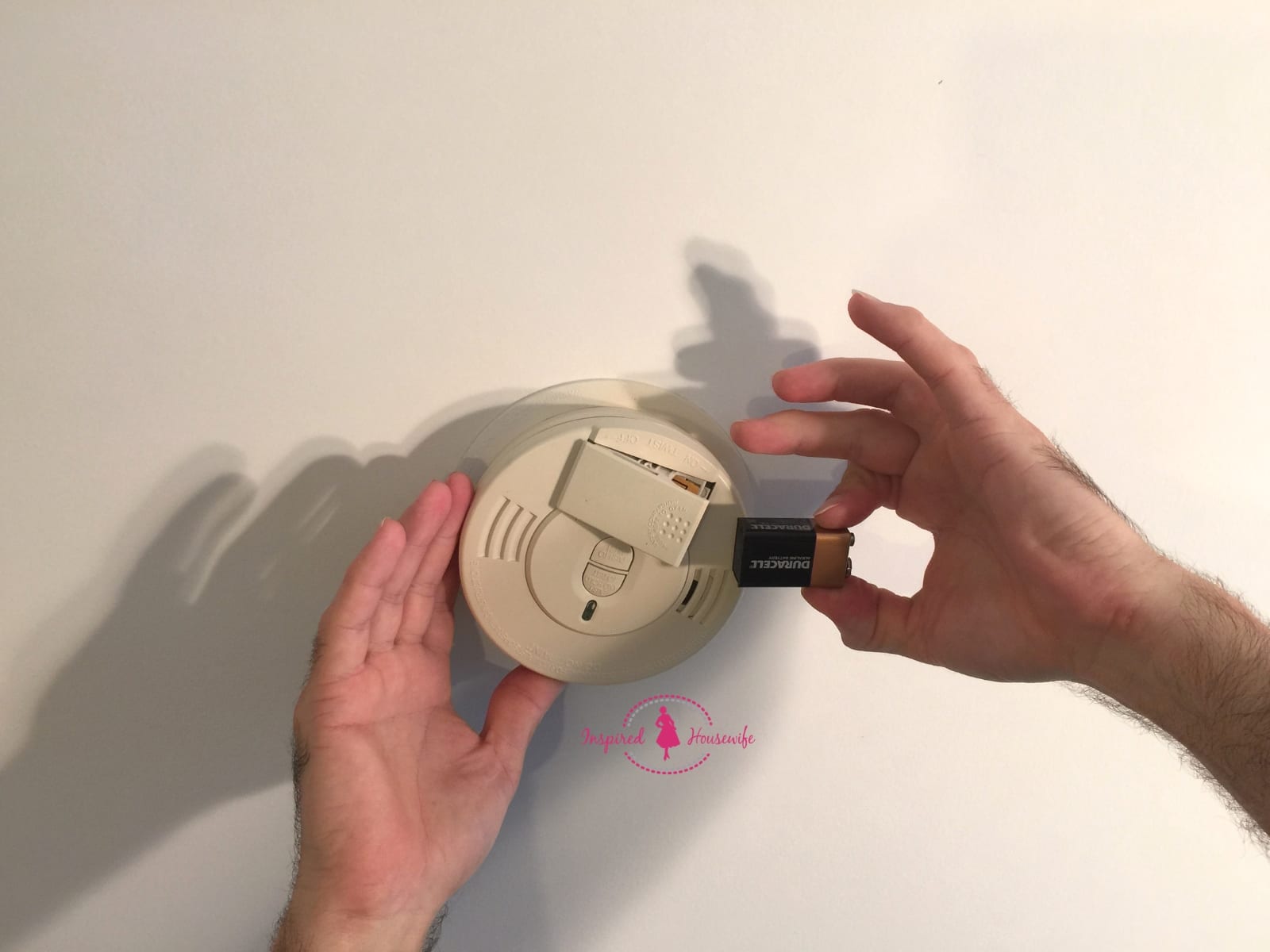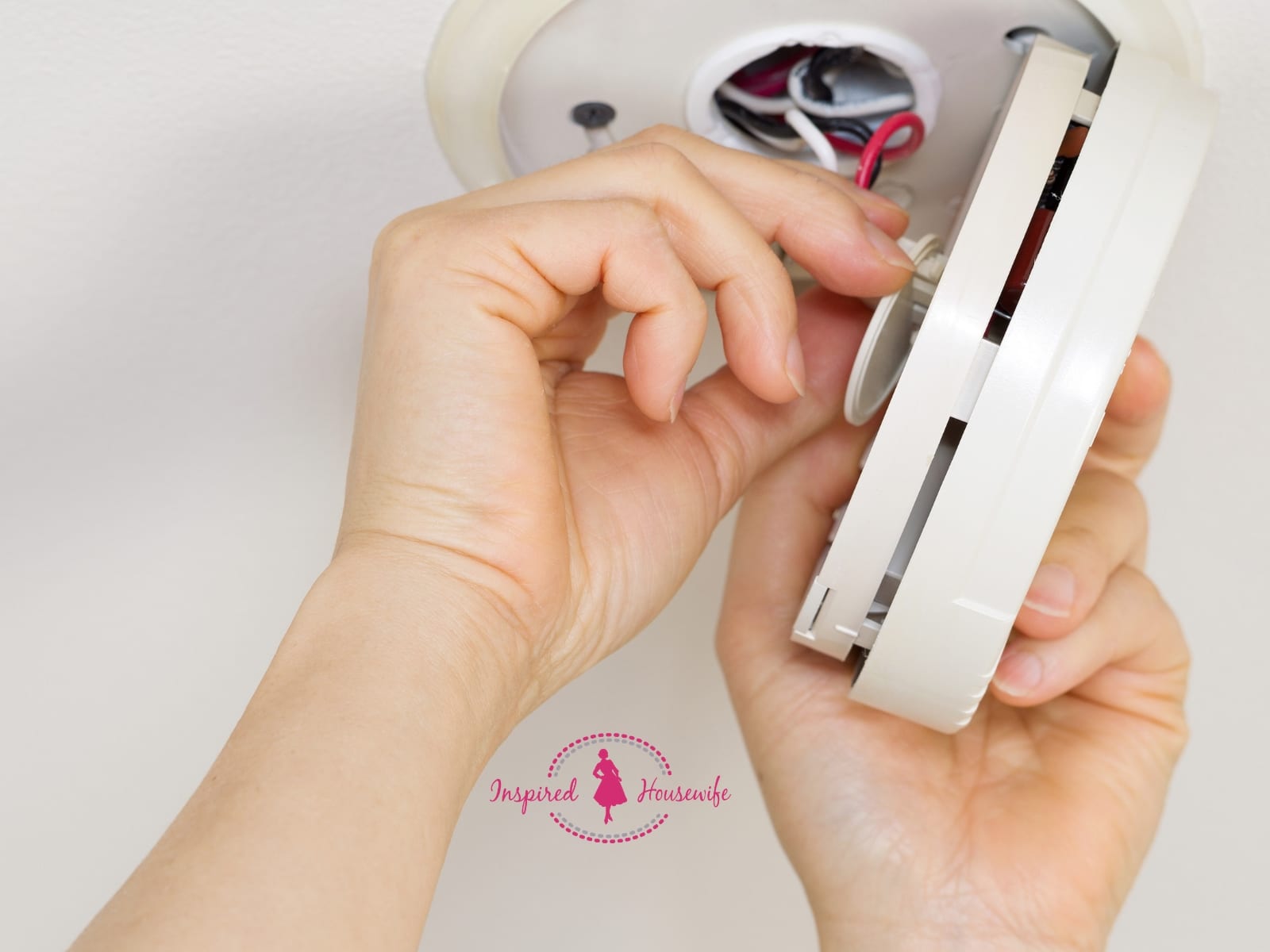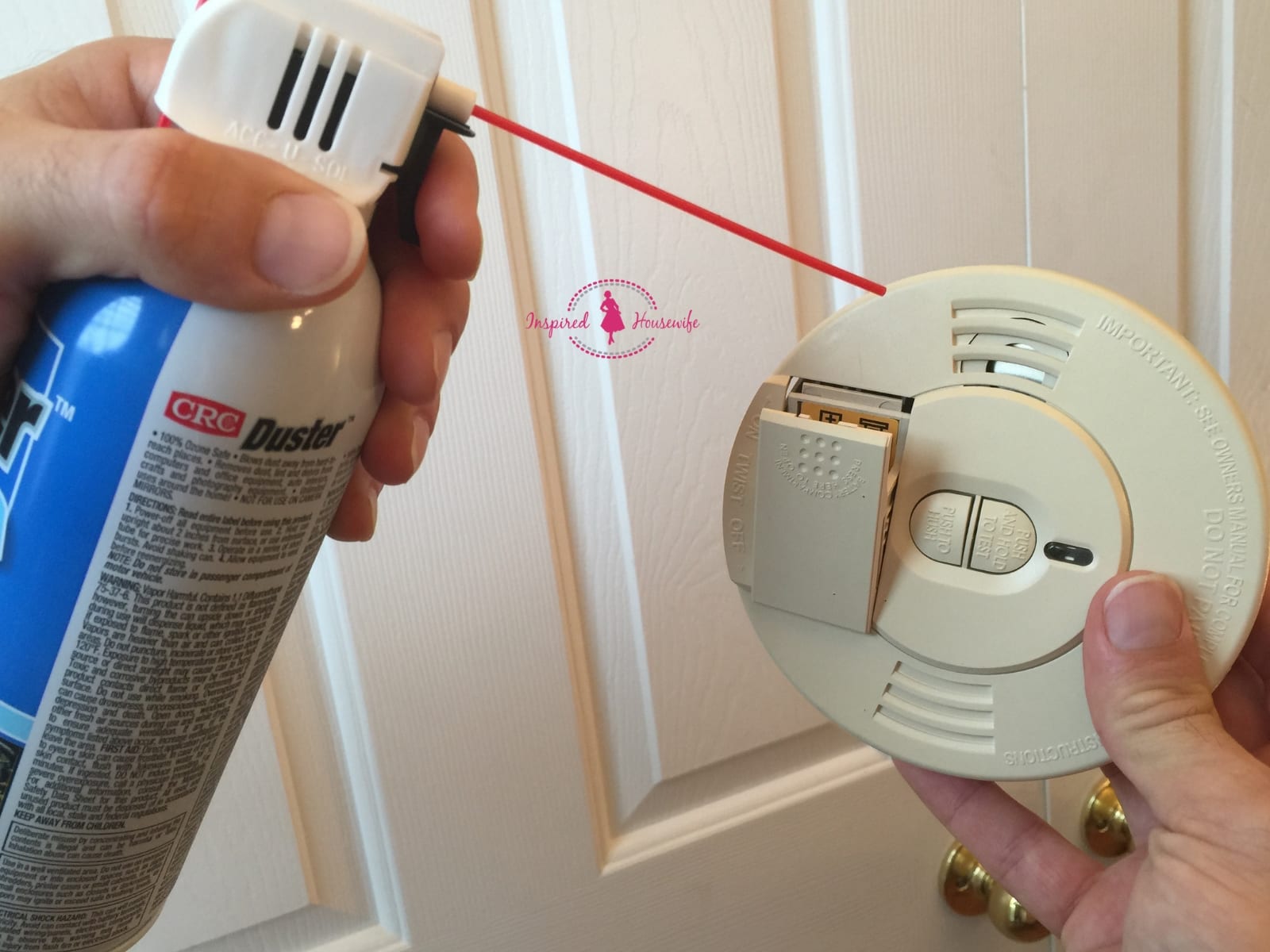Try These Steps When Your Smoke Detector Beeping or Chirping Starts
Steps to Take to Stop a Beeping Smoke Detector:
- Replace Old Battery
Replace the old battery, making sure you insert it correctly. See if the smoke detector beeping stops with simple battery replacement before you continue down this list.

- Remove Smoke Detector
If the smoke detector beeping continues despite replacing the battery, remove the smoke alarm from the ceiling. This is usually done by rotation of the detector until it releases from the base. If the smoke detector is wired, then you must also disconnect the wiring plugin from the smoke alarm.

- Remove Battery and Hold Down Test Button
Once you have the smoke detector down from the ceiling, remove the battery if its still attached, and hold down the test button on the top of the smoke alarm for about 15 to 20 seconds. Any residual smoke detector beeping will drain from the electronic capacitors and circuitry within the smoke alarm.
- Clean Smoke Detector
Next, the smoke detector must be cleaned of the dust that accumulates over time. There are several methods to do this. Vacuuming is the method recommended by many manufacturers, but some electronics experts advise against vacuuming, due to the creation of static electricity, which can damage some electronic components. Another effective method—and the one I recommend—is to blow out the smoke detector with compressed air. If you do not have an air compressor, you can easily use a can of compressed air purchased from your local home goods or office supply store. Make sure you blow out the detection vent on the front surface of the smoke alarm, inside the battery compartment, and around the side openings of the smoke detector. Reinstall the smoke detector and insert a charged battery. (In most cases, the smoke detector beeping will stop. If it does not, see the notes below.)

Other Notes for Smoke Detector Beeping
For some smoke alarm brands, one weak battery in a wired system can cause “nuisance alarm” smoke detector beeping that cannot be remedied once it starts. In addition, some smoke detectors expire after five to seven years anyway.
Unfortunately, you won’t know this unless you have faithfully gone through the steps above to see if they stop smoke detector chirping. If you do find that my suggestions don’t help, I’m afraid you will need to replace the affected smoke alarm.
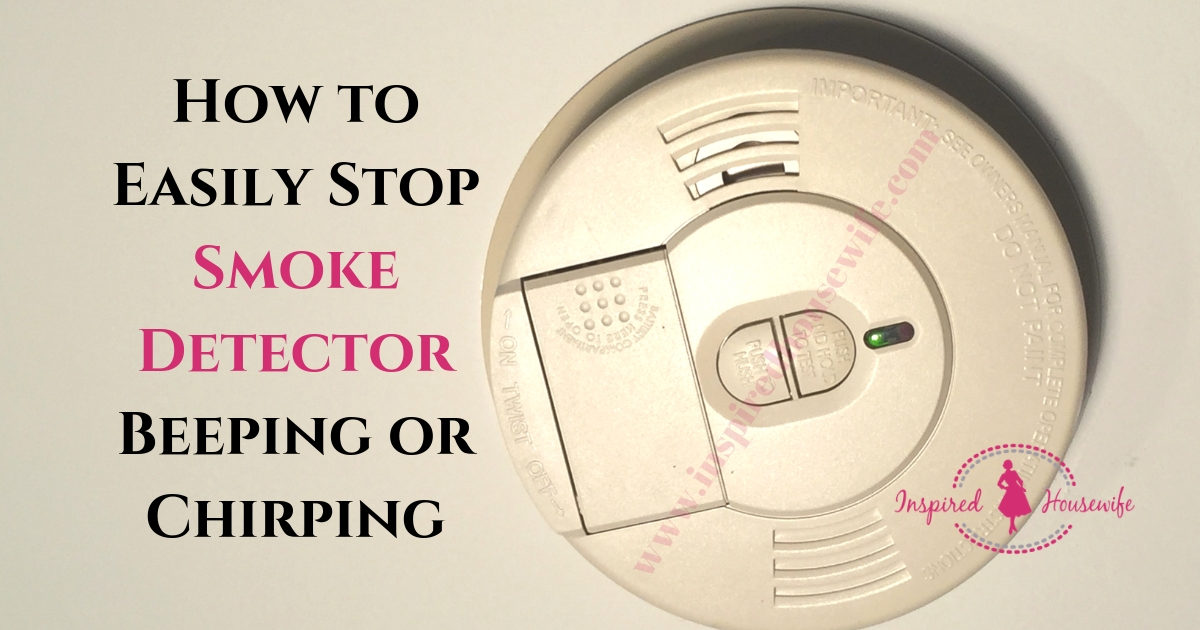
In fact, the U.S. Fire Administration recommends complete smoke detector replacement every 10 years. See my recommendations below for the top smoke detectors currently available.
Not all smoke detectors are equal. In fact, although most people use the term smoke detector for residential smoke alarms, the terms detector and alarm mean different things.
Smoke detectors sense smoke only, and connect to a fire alarm system. They are typically used within hotels, hospitals, and in other commercial or industrial applications.
Smoke alarms detect the presence of smoke by one or both of two sensor types: ionization and photoelectric. The U.S. Fire Administration, the U.S. Consumer Product Safety Commission, and the National Institute of Standards and Technology conducted a controlled laboratory test of smoke alarm responses of these two sensor types.
The experiment revealed ionization alarms provide faster notification to fast flaming fires like those associated with oils in cooking, gasoline, or other accelerants.
In contrast, photoelectric alarms provide faster alerts to smoldering fires like those associated with synthetic building materials, carpets, or mattresses. The alarm placement within the home, however, made the greatest impact on the time of ignition to the alarm sounding time.
So, why is this important? It means smoke alarm sensor type matters less than the placement of the alarm. All alarms should be placed within a home according to the manufacturers recommendations in combination with local building codes.
Furthermore, some states require combination smoke alarms and carbon monoxide (CO) alarms.
Most fire experts and organizations recommend ionization and photoelectric sensor alarms and CO alarms within homes, either separately or combined in multiple sensor alarms. Other experts feel ionization alarms, although the most common sensor type in the alarms used in most homes, do not afford adequate and timely notification of most fires and more commonly give false alarms (cooking, burned toast, shower steam, etc.) than do photoelectric alarms.
In practical terms, this means people more likely disable ionization-type alarms than photoelectric alarms. Whatever sensor gives the best notification of a fire within your home becomes pointless if you chose to disable or not even install a smoke alarm.
If you prefer environment-friendly products, photoelectric sensor alarms meet the mark over ionization sensor alarms. Photoelectric smoke alarms do not use the small amount of radioactive elements like americium-241 contained within sensors of ionization alarms.
Purchasing a New Smoke Alarm
Smoke alarms vary in features, primary power source, and sensor type and discrimination capability. What most likely brought you to this article was that irritating inability to stop smoke detector beeping or chirping.
Alongside repeated false alarms, people disconnect or remove smoke alarms within their homes for these reasons. The current smoke alarms vary in their ability to discriminate between an emergency and a false event like steam or cooking.
If you must purchase a new alarm, please see my review below of the current best smoke alarms. Depending on your home, you might need battery operated or hardwired smoke alarms, so I divided my review based on this.
Please note, my selection of the best smoke alarms is based upon sensors and other features, not a specific brand. I am not affiliated with any alarm manufacturer, and provide the most objective review possible based upon my product research and personal experience.
The Best Smoke Alarms Available
Battery Operated Smoke Alarms
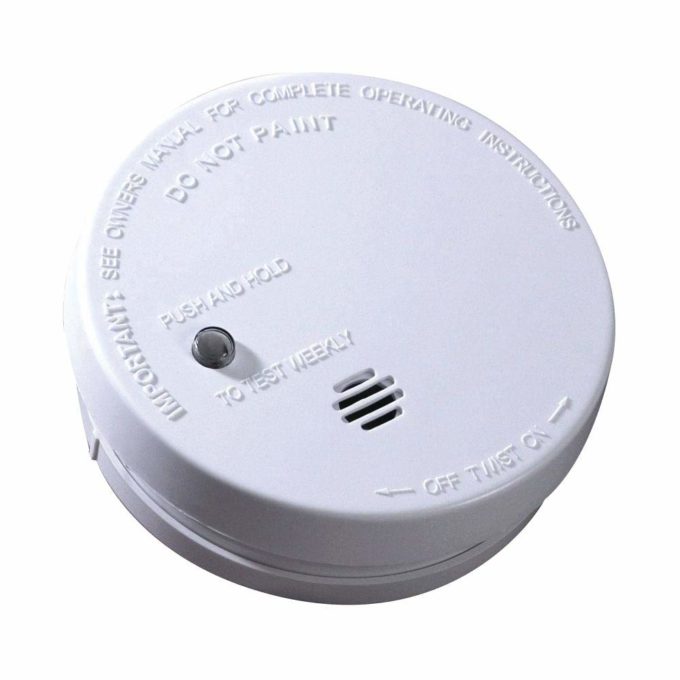
Kidde i9040 Battery-Operated Ionization sensor Compact Smoke Alarm
Pros: If you want a basic smoke alarm, this alarm provides what you need. This small, 4-inch diameter smoke alarm contains an ionization sensor for faster detection of flames.
Well-known within the smoke detector industry, Kidde provides some of the most economical alarms on the market.
Cons: Contains an ionization sensor only, no carbon monoxide detection, and less environmentally friendly.
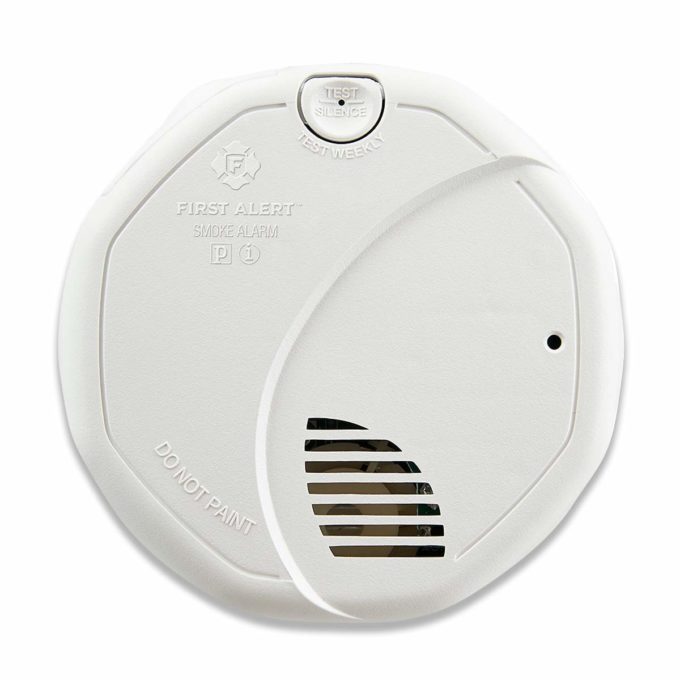
First Alert SA320CN Dual-Sensor Smoke and Fire Alarm
Pros: This smoke alarm contains both ionization and photoelectric sensors to provide early warning of fast-flame and smoldering fires.
It contains a loud 85-decibel siren to awaken the soundest of sleepers in your household. First Alert also leads within the fire protection industry.
Cons: No carbon monoxide detection and less environmentally friendly.
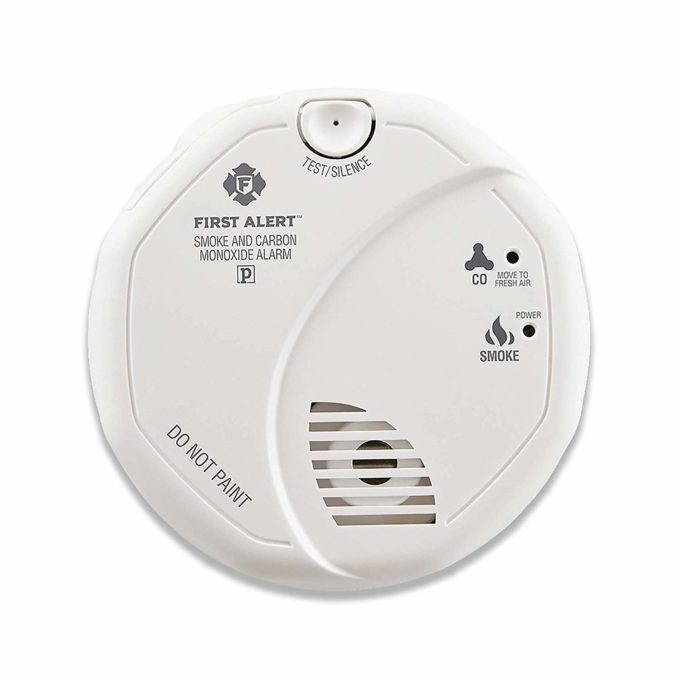
First Alert Smoke Detector and Carbon Monoxide Detector Alarm | Battery Operated, SCO5CN
Pros: This smoke alarm contains a photoelectric sensor, minimizing false alarms due to cooking smoke or shower steam.
This sensor allows for greater environmental friendliness.
Additionally, this alarm contains an advanced electrochemical sensor to detect carbon monoxide leaks from multiple sources, like faulty fuel-burning appliances, blocked chimneys, or generators running inside or too close to homes.
It also contains loud 85-decibel siren.
Cons: Affordable, but more expensive than previous two units. Not available in some states within the USA. If you also want an ionization sensor, this unit contains only the photoelectric sensor.

Nest Protect Smoke and Carbon Monoxide Alarm, Battery Powered (Second Generation)
Pros: If you want the elite option, the Nest smoke and carbon monoxide alarm exceeds all expectations!
This alarm contains a split-spectrum sensor to photoelectrically detect a wider range of smoke events from slow, smoldering to fast flaming fires.
It also contains heat, humidity, and ambient light sensors for greater ability to distinguish fires from false events and give you the surety the alarm currently functions properly.
The Nest alarm provides voice alert of the exact event location and an 85-decibel horn. Additionally, this alarm lights your way at night and continually checks battery charge to eliminate those alloying chirps.
If you love modern technology and integration, the Nest alarm connects by Wi-Fi, allowing communication to other installed Nest smoke alarms, and gives the ability to activate those alarms much like hardwired systems.
It integrates with other Nest products like thermostats to allow automatic shutdown of any furnaces during carbon monoxide alerts.
One of the best options includes the ability to receive alarms from any location via your mobile phone, letting you check while away from home.
Cons: Expensive compared to the other options, but unbeatable considering capabilities, integration, and protection.
Click HERE to view the full line of Nest home integration options.
Hardwired Smoke Alarms
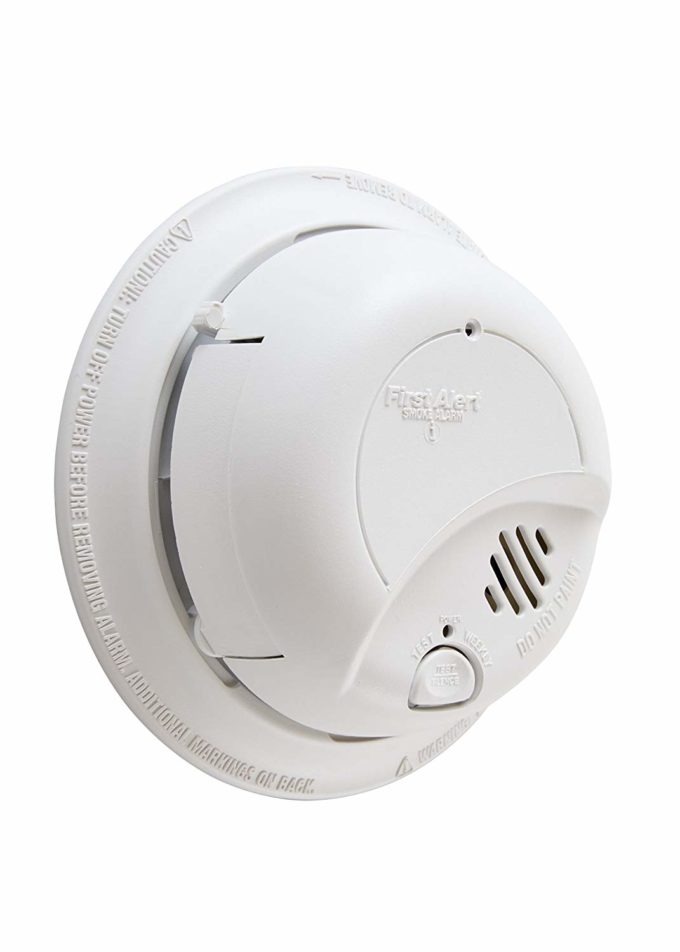
First Alert Smoke Detector Alarm | Hardwired with Backup Battery, BRK9120b6CP
Pros: This inexpensive, basic smoke alarm provides battery backup to ensure uninterrupted protection even during power failures.
Equipped with an ionization sensor and 85-decibel alarm, it can connect to other First Alert smoke alarms to ensure house-wide alert when one alarm detects smoke.
Cons: Requires wired connection if not existing already. Contains an ionization sensor only, no carbon monoxide detection, and less environmentally friendly.
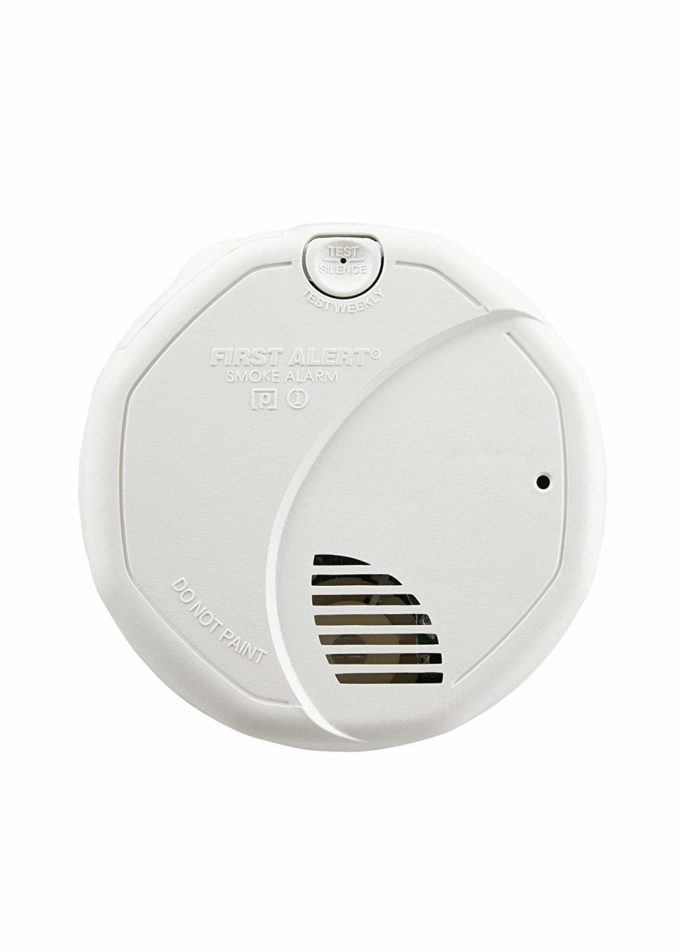
First Alert Smoke Detector, Photoelectric and Ionized Alarm | Hardwired with Battery Backup, BRK 3120B
Pros: The BRK 3120B from First Alert gives another hardwired smoke alarm option with battery backup.
This particular model contains both ionization and photoelectric sensors, allowing for earlier detection of fast-flaming and smoldering fires.
It contains a loud 85-decibel alarm, and can also interconnect with other First Alert smoke alarms for household-wide notification.
Cons: Requires wired connection if not existing already. Contains no carbon monoxide detection capability, and is less environmentally friendly due to ionization sensor.
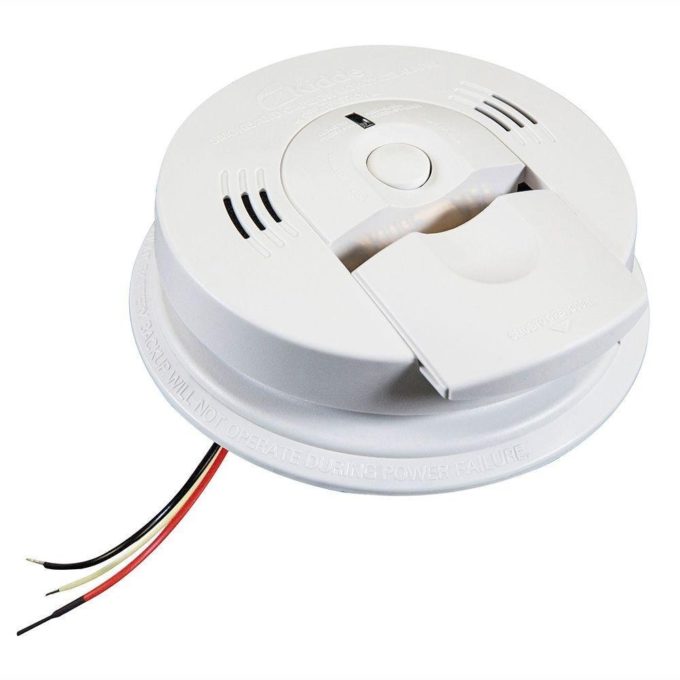
Kidde KN-COSM-IBA Hardwire Combination Smoke/Carbon Monoxide Alarm
Pros: This affordable Kidde smoke alarm model detects both smoke and carbon monoxide, and uses ionization sensor technology for fire detection.
Like the previous hardwired models, it contains battery backup, and interconnection capability.
Additionally, its talking alarm announces the hazard type detected.
Cons: Requires wired connection if not existing already. Less environmentally friendly due to ionization sensor type.
Special Needs Options
As a mother of a child with autism, mindfulness of those who need special consideration. These include individuals with special needs, those with different sensory requirements, and people on both ends of the age spectrum.
Below are three options identified to assist those fitting this description. Note: Please ensure the smoke alarm matches the specific needs required, given each person’s alert stimulus type and threshold varies.
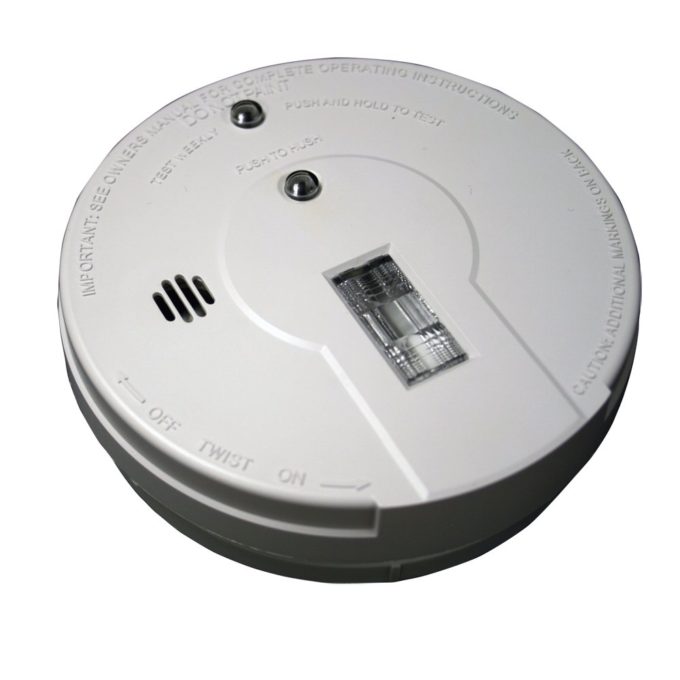
Kidde Battery Operated Smoke Detector Alarm with Safety Light | Model i9080
Pros: This inexpensive battery operated smoke alarm contains a safety light to illuminate an escape pathway.
Especially suited for hallways and stairwells, it could also provide additional notification to those who need a stimulus other than sound to alert them of danger.
Cons: Contains an ionization sensor only, no carbon monoxide detection, and less environmentally friendly. Requires light stimulus to awaken someone, so not optimal for every situation.
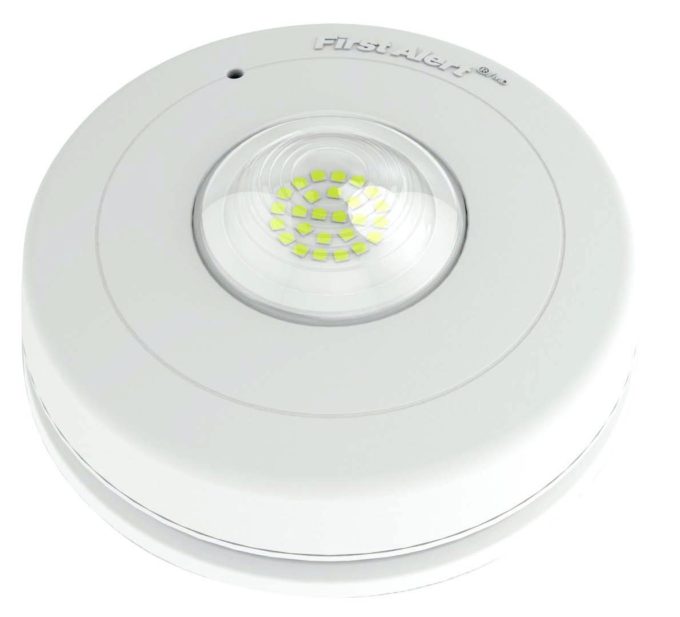
First Alert SLED177 Hardwired Hearing Impaired Led Strobe Light
This alarm contains a powerful 177 candela LED strobe light to provide visual warning for those who need this type of alert.
A trouble signal synchronization causes strobes to flash in unison when multiple units are installed.
Cons: Requires wired connection if not existing already. Contains an ionization sensor only, no carbon monoxide detection, and less environmentally friendly. Requires light stimulus to awaken someone, so not optimal for every situation.
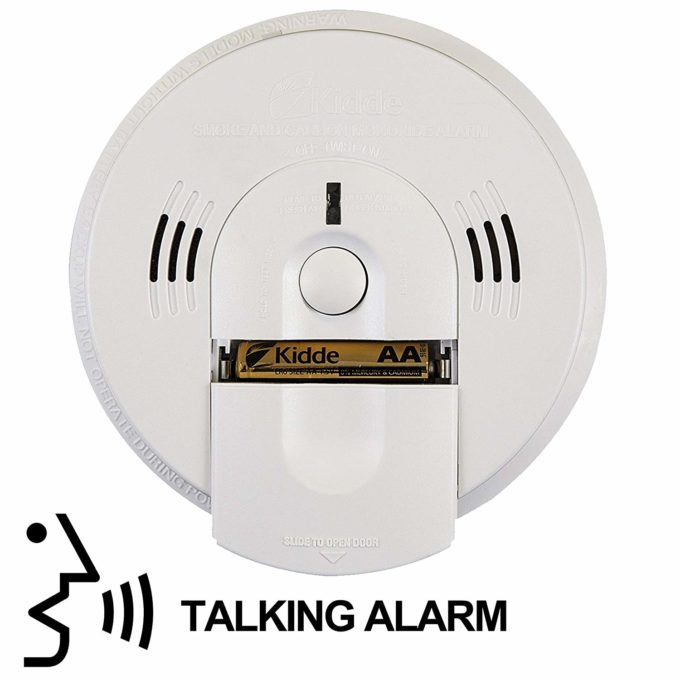
Kidde 21026043 Battery-Operated(Not Hardwired) Combination Smoke/Carbon Monoxide Alarm with Voice Warning KN-COSM-BA
Pros: This battery operated alarm detects smoke and carbon monoxide. It produces both an 85-decibel alarm and also voice announcements of the specific threat identified.
The voice also indicates when the battery is low. Works well for someone who needs voice description to understand the meaning of the alarm.
Cons: Contains an ionization sensor and less environmentally friendly due to this type of sensor.
Thanks for reading. I hope you have found this “how to stop smoke alarm beeping” post helpful. I know how bothersome those chirps can be and I know several friends who were just as clueless about it as I was.
Thankfully, the solution is simple and the peace of mind is well worth it.
Remember, house fires are more common than people realize. One of the most deadliest fires start out as electrical fires. Most people sleep through these because they are silent and within the walls.
Luckily, smoke detectors can pick up on even the slightest amount of smoke—even from electrical fires. This is why it’s important that you address any beeping or malfunction in your fire alarm immediately.
Stay diligent! Stay safe!
Note: Should you choose to purchase a new smoke alarm by clicking through the provided links, I could receive a commission from Amazon at no additional cost to you. Thank you for your support.

